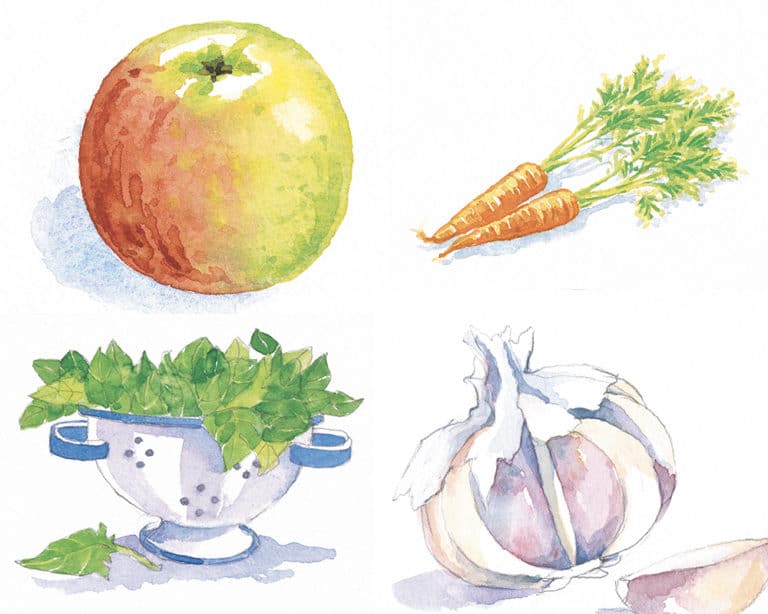
I’m hosting the first meal for Rosh Hashanah, and I’m just starting to work on my menu… with less than a week to go before the big day. No big deal, right?
For whatever reason, this year Rosh Hashanah crept up on me (it is extremely early this year). So I’m using this article as an excuse to kick my butt into gear and plan because I’m desperately trying to avoid a trip to my local kosher supermarket erev Chag. You have to be very, very brave to do that. It really should be an Olympic sport.
If you’re like me and have procrastinated to almost the very end, perhaps this “stream of consciousness” will help you build your menu.
But first, a little about my style of cooking. I like to get “complicated” in the kitchen, but I also like to keep things simple as well. One thing that I learned working as a cook in Israel is that simple is actually better for both your sanity and palate. That’s part of the genius of Mediterranean cuisine, you can achieve complex flavors with such few ingredients. Think about your favorite hummus, it was still made from the same handful of ingredients as the worst hummus you’ve ever had, but depending on how you manipulate the ingredients you can get such a wide range of textures and flavors. The complicated part in my cooking style is being able to manipulate these few ingredients into something tasty and memorable.
Now back to Rosh Hashanah– I know a few things about this dinner. First I’m expecting 6 guests, but being Jewish and the holidays I’ll plan for a few more late additions just to be safe.
Second: I know that I’m going to center my meal around the star– a slow roasted leg of lamb. Everything that I make will build up to and center around this.
Third: There will be a fish course (obviously). I already picked up my fish head but that’s not for serving…
Fourth: I will have a soup course as well (tradition!), even though I’m not terribly excited about making soup. Maybe inspiration will hit me as I write.
Fifth: I want to embrace the traditions and symbols of the holiday in my menu planning. So that means I’ll be sprinkling in the flavors of honey, apple, pomegranate, carrots, leeks, black eyed peas, chard and dates.
And finally, Rosh Hashanah is a harvest festival so I want to embrace the spirit of that as well. For me that means serving up fresh, bright flavors, and nothing that’s extremely heavy (this also helps me because it seems everyone in my life is on a diet these days).
Now that we have the foundation for the meal it’s time to build off of it.
The menu
Okay spoiler… now that I’ve written and edited this piece here’s what I came up with regarding the menu.
- Traditional Rosh Hashanah Moroccan fish with saffron
- Crispy leek and chicken soup
- Slow roasted garlic spread
- Green salad with green apples tossed in a pomegranate-honey vinaigrette
- Slow roasted, honey glazed twice-marinated herbed leg of lamb
- Apple cider and honey glazed carrots with rosemary
- Charred green onions in flaky salt
- Southern style greens with black-eyed peas
- Fragrant savory yellow rice
The lamb
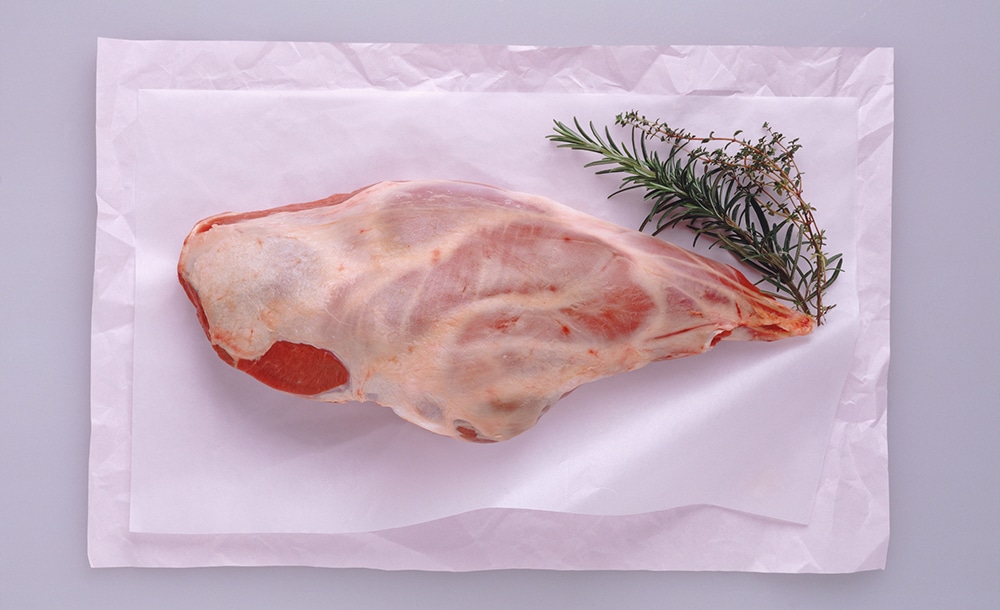
I’m looking for a bone-in leg of lamb that is around 6 to 8 pounds (this should feed around 10 people or 6 to 8 very generously).
The general consensus is that you don’t want to marinade meat longer than 2 days. Beyond that you can actually break down the proteins in the meat and get a weird texture. So sorry grill dads, your 5-day marinated steaks probably aren’t as great as you think they are. (Not to be confused with dry aging which is a completely different technique.)
Growing up down South I learned so much from the barbeque and meat smoking culture down there. One technique that I’m a big fan of is the two-step marinade which starts with a dry rub and transitions over to a wet one. Some people argue that it’s a waste of time to do both, but I’ve achieved pretty great results in the past.
First thing first, once I get the lamb I’ll wipe it down to remove any excess moisture and then I’ll simply rub it down with salt and pepper. Since keeping glatt kosher this step has become less relevant due to the meat being already salted but my goal is to take out as much moisture in order to “rehydrate” it with flavor. Depending on which day I’ll pick it up, I’ll let the leg sit in the fridge until Saturday night.
Saturday night I’ll then add the dry rub, some olive oil, and fresh herbs. I’ll rub the leg down with high quality olive oil (this is very important and makes a huge difference), I have an herby harissa that I’m a huge fan of and I’ll rub it down with that as well, then add some chopped garlic, and finally I’ll wrap the entire leg in a mixture of fresh herbs that includes thyme, rosemary, and mint (just a little mint, not as much as the thyme and rosemary). I’ll then tightly wrap the entire thing in cling wrap and let it sit in the refrigerator until Sunday night.
On Sunday I’ll then add the wet rub. The wet rub is going to be very, very simple. A good quality red wine (again this is important, do not use cheap wine), probably a pinot noir which is the classic lamb pairing. This follows the recipe of most barbeque sauces: one part acid, one part sugar, one part spices. We already added the spices with the dry rub, the wine serves as the acid and the sugar component will come later during the cooking process (honey!). I’ll sprinkle the meat with the wine, repackage it with the herbs on top and in the morning on the following day I’ll add more wine to the whole thing.
When it comes to cooking time I’ll follow the general thought on cooking low and slow for a leg of lamb. I want more pink than not. I’ll roast it at 200 degrees for around 4-5 hours, which gets tricky because that long in the oven will dry the meat out. I plan on basting the leg in vegetable stock periodically (every 30-45 minutes or so) until the last 15 minutes.
At the very end, the last 15 minutes of cooking, I’ll raise the temperature to 400 degrees and pour on a mixture of pomegranate juice and honey. Adding the sugar at the end caramelizes the honey and crisps up the meat.
Before serving I’ll sprinkle on top some pomegranate seeds and chopped parsley with a few sprigs of mint.
Fish
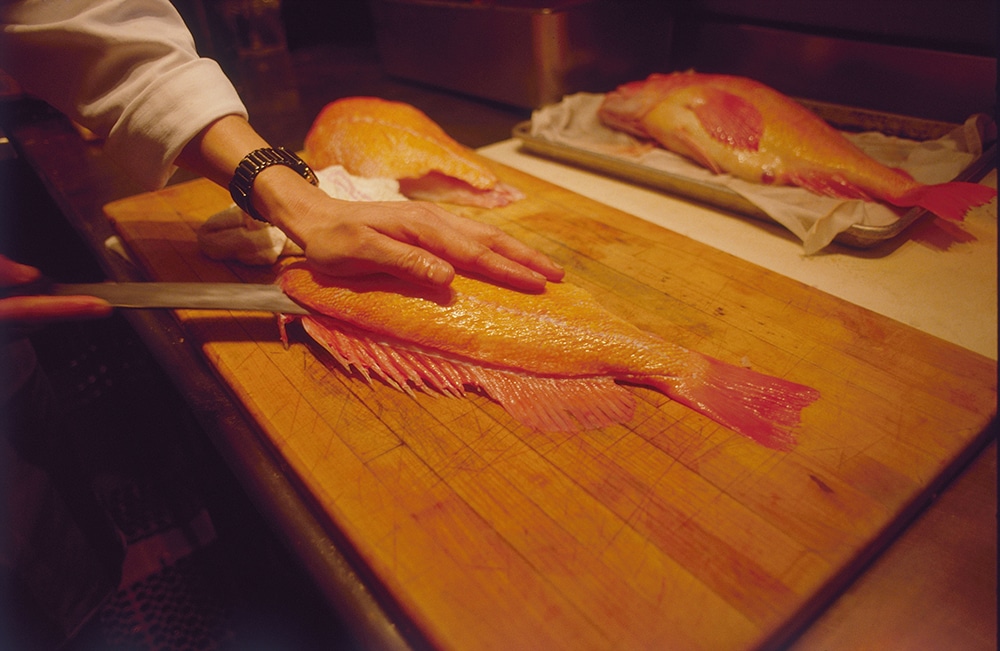
One of my guests loves Moroccan fish and I’m going to treat him by cooking a very traditional Rosh Hashanah recipe that involves stewing fish in saffron, turmeric, garlic, carrot, red pepper, lemon and cilantro.
In my neighborhood (Crown Heights, Brooklyn) the go-to fish is salmon and it pops up in every fish course, even ones that are inspired from North Africa (where they are not indigenious to). I plan on leaning more into tradition and will be cooking with a firmer, white fish like halibut, cod or maybe even red snapper.
The process of cooking Moroccan fish is relatively simple and the hardest part is making sure that you do not overcook your fish. The fish is going to cook fast so you have to pay attention.
I’ll marinade my fish really quick (no more than 20 minutes or so) in salt, pepper, lemon, paprika and chopped garlic.
I’ll then start with my aromatics in a pan, layering up the flavors until it’s time to add the fish. My inspired recipe will more or less follow this one.
Soup
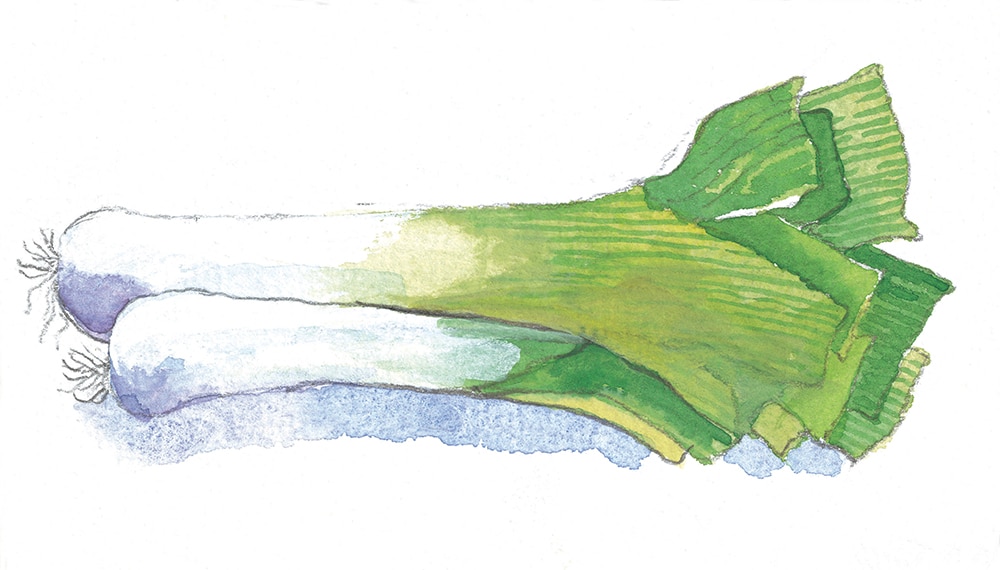
I have a lot on my menu and I’m at risk of just serving way too much (I channel my inner Jewish mom every time I cook) so I do not want to serve a soup that has a lot going on in it. Some people traditionally go with matzo ball soup on Rosh Hashanah but this year I’m not feeling it. I really do not want to spend a chunk of my day making matzo balls from scratch.
I want my soup to be almost refreshing so I’ll be leaning into the styles of consommés (clear light broths). Typically consommés get their light taste from clarifying the broth with egg whites… again I’m going for simplicity so it’ll be making a consommé-style broth “cheating” at the end to clarify the soup.
I plan on making a simple leek soup that pulls from Mediterranean flavors. I think it’ll bring a nice balance to the meal coming after the spices in the Moroccan fish.
I’ll cook down a lot of leeks (cut in half, including the green parts, and quartered) in a large stock pot with olive oil and whole heads of garlic. Once they’ve sweated down and reduced in volume (say 15 minutes or so) I’ll then add a small whole chicken and a few carrots, celery and a quartered yellow onion. I’ll brown everything up in the stock pot for a few minutes and then I’ll top it off with water, add some chicken bones and a bouquet garni of Mediterranean herbs (thyme, fresh oregano, parsley, bay leaves, lemon rind). I’ll simmer this down for an hour or two, skimming the scum off the top every now and then.
After the first couple of hours, I’ll strain the soup, reserving the chicken, carrot and bones. The strained broth goes back on the stove with a fresh bouquet garni (minus the lemon) and the bones. I’ll then reduce the stock for another couple of hours on very low heat. I’ll be tasting the soup often to adjust the seasoning, it will need more salt at some point, that’s a given. Depending on the flavor, I may even add white pepper.
Thinking out loud, I will make the soup a day ahead. That way I’ll do a lazy man’s clarification and scrape the schmaltz (fat) cap off the top the next day, no egg whites needed, and use it in another dish. Soup always tastes better the next day anyway.
The next day while the broth is coming back up to temperature, I’ll take more leeks, dice them up, and crisp them in olive oil in a very hot cast iron skillet. I want to cook the leeks to the point of being nearly crunchy but not burned.
I’ll then cut down the chicken and carrots into slices. I’ll place the chicken into the bowls along with the sliced carrot and pour the hot broth over it. Garnish with parsley and it is ready to serve. I just have to make sure I reserve some of the stock for another dish that I plan on making.
Side dishes
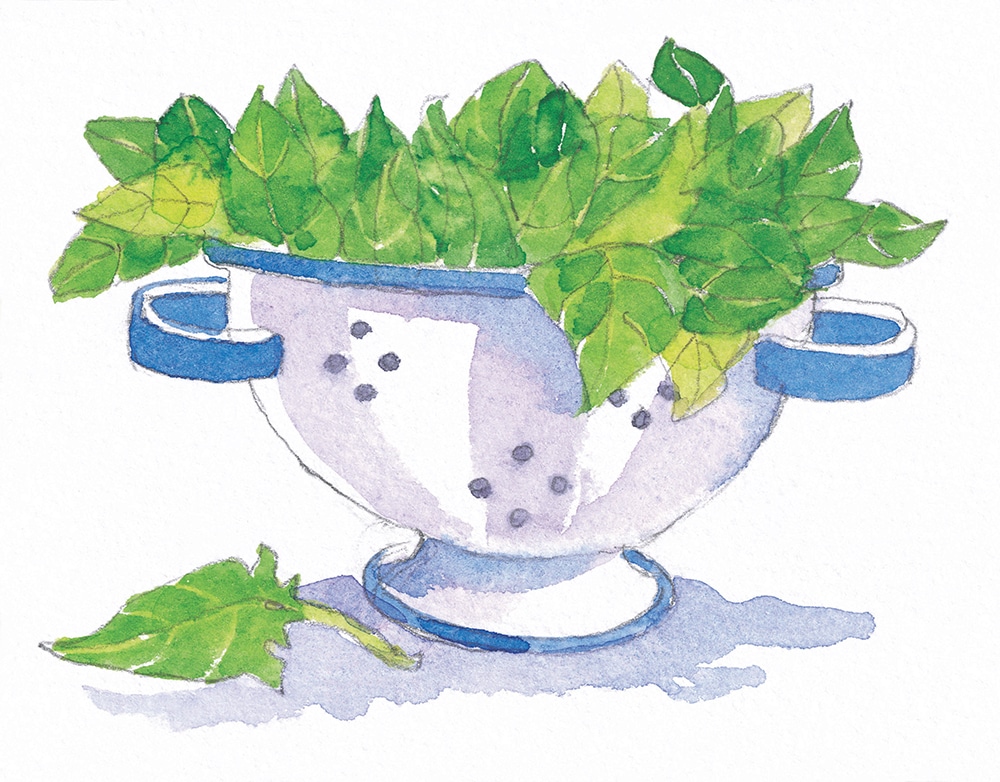
I love side dishes. I’m the guy at the Shabbos table who can make an entire meal out of dips. A large part of my job when I was professionally cooking was at the salad/vegetable station and I still feel that pull today.
But, in the spirit of being simple, I do not plan on going crazy with my sides and if I’m going to be honest too many dips can bog you down no matter how much you love to eat them.
I’ll buy schug and hummus from my butcher (they seriously make the best) and maybe I’ll grab a few pre-made dips such as an olive dip, etc… from the grocery store.
I’m debating if I want to make a roasted garlic spread. It’s super easy, take whole heads of garlic, drizzle them in olive oil, wrap in foil and slow roast them till they turn soft (it would be super easy to do this while the leg of lamb is in the oven, as both cook at the same temperature). Once roasted you then take the soft cloves and turn them into a paste with olive oil, salt and pepper.
I will make a very simple green salad from thinly sliced green apples and red onions, perhaps walnuts and sliced dates or figs with a vinaigrette made out of pomegranate syrup, aged balsamic vinegar, honey and olive oil and plenty of fresh pepper.
As for the vegetable sides I’m going to go to my standby carrot dish made from heirloom carrots (the multicolored ones) roasted whole in apple cider, honey, rosemary and garlic. This dish is super easy and is always a hit.
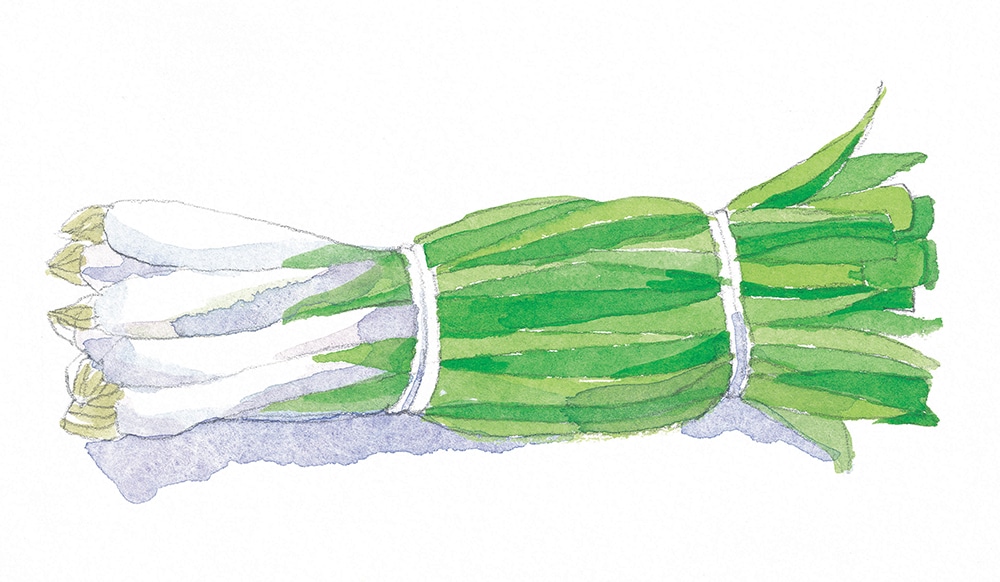
I have another standby which is a huge hit everywhere– blistered green onions. Typically I make this on a grill, but being Brooklyn a cast iron skillet will have to suffice. The recipe is super simple: trim green onions and cook them in olive oil on extremely high heat until they blacken. Once done, drizzle lemon juice and either a flaky salt or rock salt on top (the texture of the salt adds an extra layer of flavor). The blistering process turns the green onions into a crunchy, yet creamy sweet taste and mouthfeel.
I still need two more dishes until I’m comfortable with my meal being complete and balanced. Again, we are going for simplicity. I’ll probably make a classic dish of Southern greens and black-eyed peas, which is collards, onions and black-eyed peas all cooked in one big pot with a key ingredient– vinegar. I may even use some of the lamb drippings in this dish to tie it back to the meal (no different than Southerners using ham).
This leaves me down to my last side dish and I need a starch– I’m thinking savory fragrant yellow rice. Rice (probably basmati) cooked with turmeric, garlic, fried shallot, onion and dates, with fresh cilantro and green onion added at the end. I’ll make the rice with some of the chicken leek stock that I made for the soup. I’ll also use some of the schmaltz to make the dish savory, tossing it in after the rice is cooked and baking it really quick on high heat in the oven.
Dessert
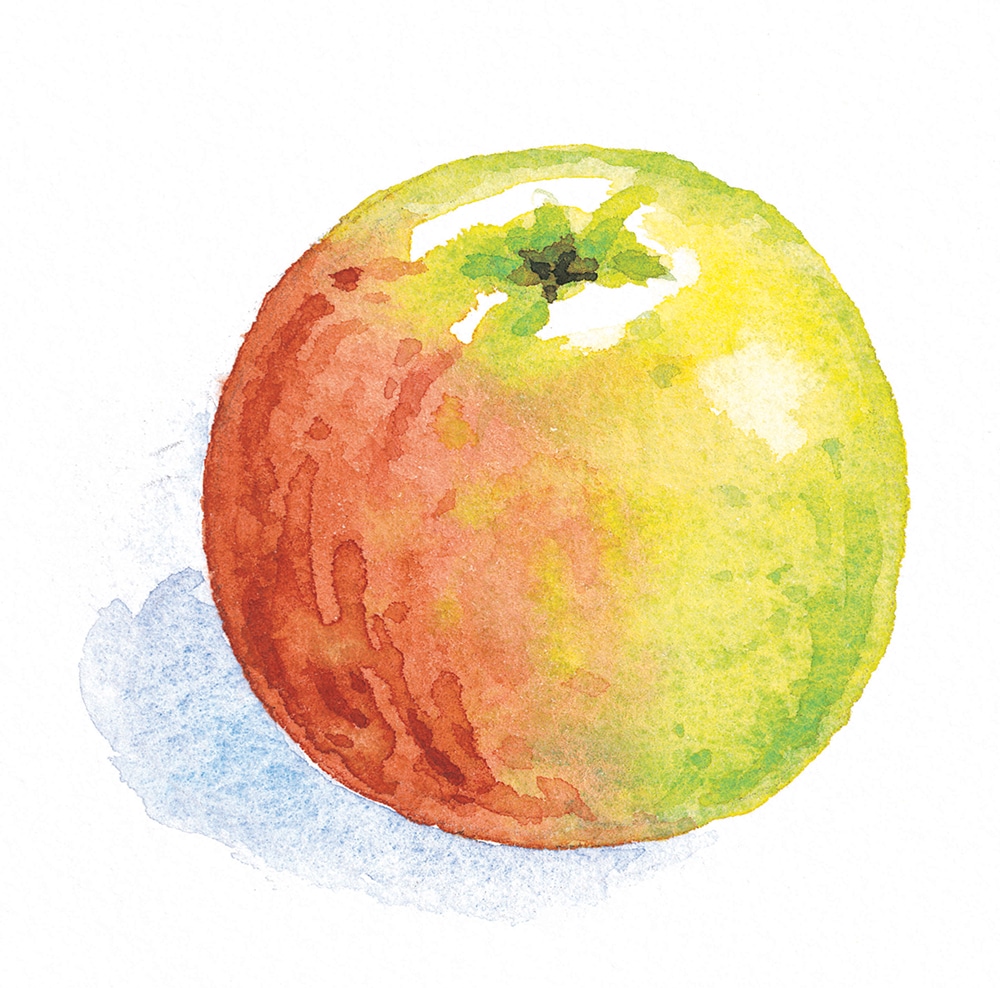
You may notice that I have zero dessert planned. I don’t bake so this leaves me in a difficult situation (but not really). I’m asking guests to bring something and I’ll have an assortment of fresh and dried fruits also to serve. (Kiwi is my new fruit every year, long story.) Hey, if you make a really good honey cake and need a place for Rosh Hashanah on the first night, let me know! Shana tova!
To recap
Rosh Hashanah 5782 menu:
- Traditional Rosh Hashanah Moroccan fish with saffron
- Crispy leek and chicken soup
- Slow roasted garlic spread
- Green salad with green apples tossed in a pomegranate-honey vinaigrette
- Slow roasted, honey glazed twice-marinated herbed leg of lamb
- Apple cider and honey glazed carrots with rosemary
- Charred green onions in flaky salt
- Southern style greens with black-eyed peas
- Fragrant savory yellow rice
Originally Published Sep 2, 2021 12:02AM EDT
